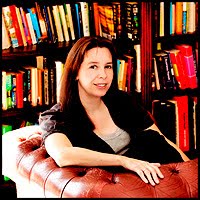Today the postie brought me a treat - another "new old book"! This one is The Ruby Fairy Book, an anthology first published around 1900 with illustrations by H.R.Millar. This edition, published by John F. Shaw & Co., is probably from 1936 and also includes some of Frank Papé's colour plates.
The book is one of a series of four comprising The Golden Fairy Book, The Silver Fairy Book, The Diamond Fairy Book and The Ruby Fairy Book. They are not to be confused with Andrew Lang's series of coloured Fairy Books (blue, pink, olive, etc).
So why, you may ask, am I, a grown (some might say mature, cough) woman, so excited about a book of fairy stories?
Well, firstly, this one isn't all that easy to get hold of. It's by no means impossible to get, nor is it wildly expensive when you do find it (though I couldn't afford the first edition at forty-five pounds), but there aren't all that many copies about. Also, as far as I can tell, it has never been digitised. I have found the Silver, Gold and Diamond books online but only one story from this one. So if you want to read it, you have to make a bit of an effort to lay hands on a copy!
Secondly, these are most definitely not cutesy sanitised fairy stories. Some of these are nasty.
Take the story of Prince Egor and the Raven ("from the Russian"). It begins with a kind of Bluebeard-in-reverse story. "Remarkably handsome" Prince Egor, upon the advice of a talking raven, woos the beautiful Queen Agraphiana the Fair, who has an army of "strong, handsome men in armour" but surprisingly, no partner. Queen Agraphiana periodically wages war on her neighbours, and during one such outing she makes the Prince stay at home in case he gets hurt(!) but warns him never to open a particular cupboard. Naturally, the minute she has ridden off surrounded by mail-clad hunks, he opens the cupboard, and inside he finds this:
Yes, it is a "hideous-looking skeleton" hung up on one hundred and thirteen chains. The skeleton, in spite of being...er...a skeleton, is not in fact dead, but very thirsty. Disregarding the raven's advice, the Prince unwisely offers it an invigorating drink of water, at which it breaks free of its chains and leaps out of the window, not before announcing that it intends to make Queen Agraphiana its own.
The Prince evidently bursts into tears at this turn of events, since the talking raven has to tell him to "dry your eyes and follow the skeleton like a man." He sets off in pursuit, and the raven tells him to procure a horse from a witch who lives near a fiery river.
There is an illustration here of the witch's house, "which was surrounded by a hundred poles, on ninety-nine of which were human skulls."
At this point in the story I felt I had wandered into Heart of Darkness by mistake. It is amazing what was considered sweet bedtime reading for children in the early 1900s! I am glad to report however that the story ended happily for everyone except the skeleton, and especially for the talking raven.
I haven't read all of the stories yet and I doubt that they are all as grotesque as that one, but I have read the very first one in the book, which is called Cinderella's Daughter and begins thus:
" 'So Cinderella married the King's son.' And a few months later the King died, and Cinderella's husband was King. Shortly after this the Queen had a little daughter, who was called Mimi."
Admittedly this particular story is translated from the French of Jules le Maitre but still Mimi struck me as a surprising name for a Princess - I can't see the Duke and Duchess of Cambridge calling their baby that if it's a girl! (It'd make a lovely name for a burlesque dancer, mind you.)
Princess Mimi is (naturally) drop-dead gorgeous, but soon runs into marital problems as the law of the land requires her to marry at the early age of 15, and the groom has to be a prince. The only two princes to be found are Polyphemus, who is seven times taller than she is, and Hop o' my Thumb, who is seven times smaller. Decisions, decisions...
Above: Little and Large?
Other tales include one about a girl who becomes Queen of the Ants, and one about a Princess who is turned into cotton wool by a wicked fairy! I've just dipped into those though, so I can't tell you what happens yet. Presumably they have happy endings...



